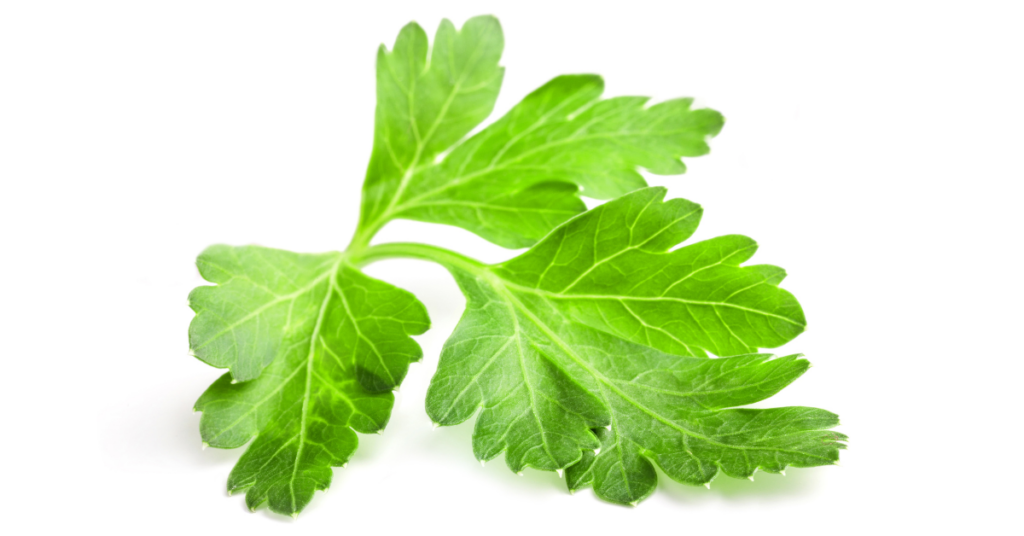Parsley (Petroselinum crispum)
Parsley is supposed to be great for sweetening the breath after eating garlic!
Studies have been undertaken to determine if there is any truth to the claim that a substance in parsley prevents cancer cells from multiplying. Parsley is used extensively in cooking, and it is believed to take away the smell of garlic if you chew a couple of leaves.
Other names: Petersylinge, persely, persele.
Description and the places it grows in
Native to the Mediterranean region – including southern Europe and Morocco – parsley has been cultivated for more than 2,000 years. Thus, parsley has long been widespread and widely used. It is naturalised throughout England and Scotland; records indicate cultivation in the UK as early as 1548.
Parts used
Roots, seeds, leaves.
Uses
Carminative, tonic, aperient, diuretic.
Respiratory problems: Parsley is an is an expectorant; good for coughs and asthma.
Anaemia: Increases iron content in blood.
Eases wind: Natural antispasmodic properties.
Other uses: Use poultice of leaves for insect bites and stings:
Constituents
Parsley’s dark green leaves are a rich source of iron and vitamins K, C and A. The roots contain mucilage, volatile oils, apiin, sugar, and starch. The seeds contain volatile oils, terpenes, and apoil (an organic allyl compound).
Contraindications
During pregnancy, avoid excessive consumption of leaves and avoid parsley oil in any form.

